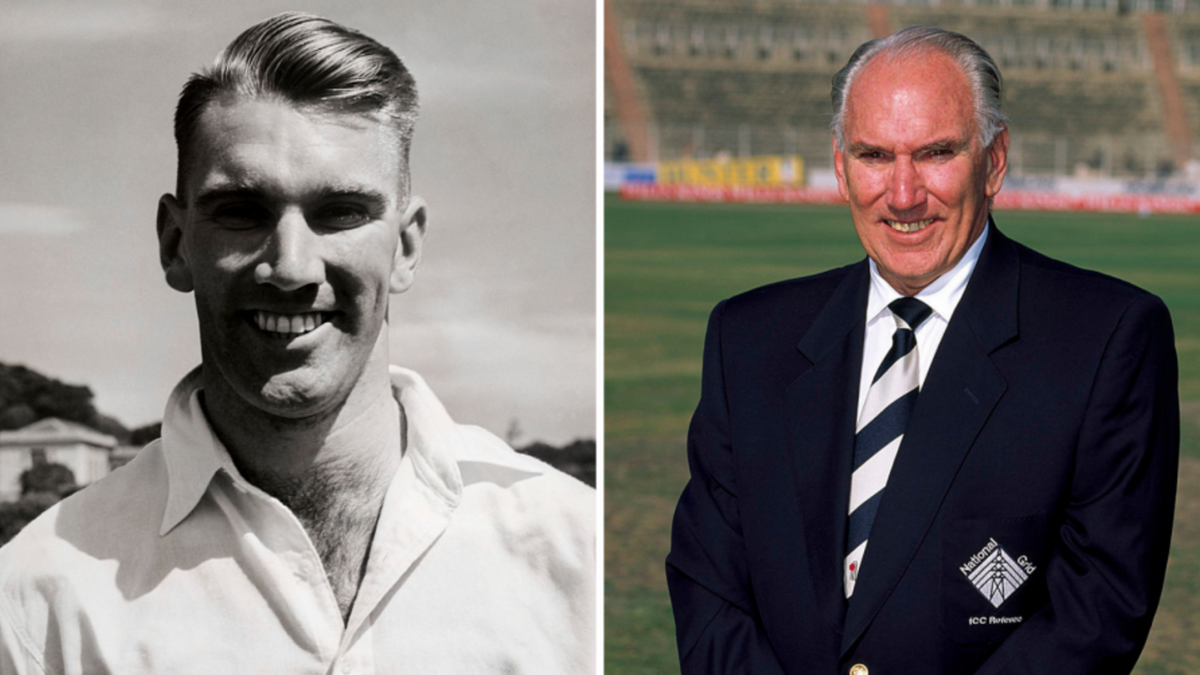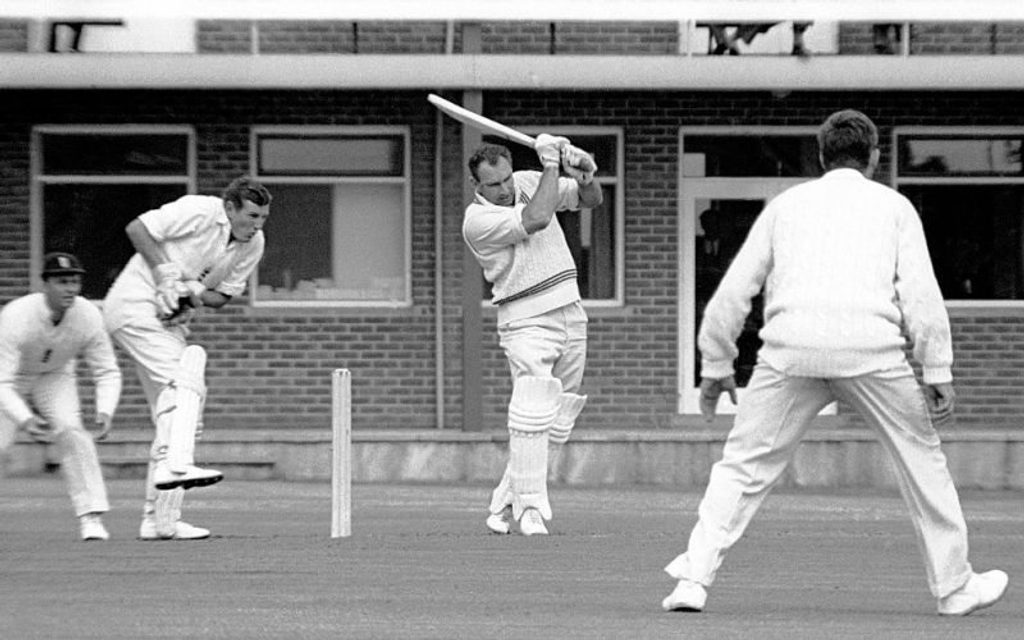
John Richard Reid, who died against 92 on Wednesday, was a crucial figure in establishing New Zealand as a cricketing force. Rod Edmond pays tribute to a player ahead of his time, and looks back at a career that traversed many roles in cricket.
When John Reid, the former New Zealand captain whose death at the age of 92 was announced on 14 October, arrived in England in 1949 with Walter Hadlee’s touring team, he must have been the most complete all-rounder in world cricket. The twenty-year old Reid was an attacking top-order batsman, a brisk medium-fast first change bowler, a brilliant fieldsman, and the party’s reserve wicketkeeper. He took the gloves in the final Test of that tour, at the Oval, where he also scored 93.
Reid did little keeping after that, but for the next decade and a half he was the mainstay of a perennially weak New Zealand batting line-up, a core member of the bowling attack, turning to medium-slow off-cutters later in his career, and from 1956 until his retirement in 1965, captain of the national team, forever famous for leading it to its first test victory in 1956.
Reid’s statistics do faint justice to his importance: 58 Tests, captain in 34 of them, 3,428 runs at an average of 33.28 with six centuries, 85 wickets at 33.35. Most of New Zealand’s top batsmen had retired after the 1949 tour, and from then on throughout Reid’s Test career, he and Bert Sutcliffe were the only batsmen capable of scoring a Test century. The burden on these two was enormous, and is reflected in their statistics. A prime example of this dependence on Reid’s batting was his 100 against England in Christchurch in 1963, made out of a total of 159, still the lowest Test team innings ever to include a century. Within 10 years, New Zealand teams would have up to five or six century-makers in their line-up.
“It finished his rugby and left his heart weak in two places, for he found his wife – she was first nurse at the hospital.”
The fine story of John Reid, the captain who led New Zealand to their first ever Test victory.https://t.co/rsETfOS2xn
— Wisden (@WisdenCricket) June 3, 2020
Particular moments better reflect Reid’s talents. Against India in Calcutta he hit four sixes in 10 balls on the opening morning of a Test. On tour in South Africa in 1961/2, not out overnight, he hit the first ball of the following day, bowled by the fiery Neil Adcock, for six. He also held a then-world record of 15 sixes in a first-class innings of 296 against Northern Districts in Wellington. At his retirement, Reid held the aggregate New Zealand Test record for runs, wickets and catches.
In some ways he was a cricketer before his time. ODI and T20 cricket would have been his forte: an attacking batsmen also capable of playing long, retrenching innings; an attacking bowler with many variations, getting through his overs quickly, always in the batsman’s face; an astute and forthright captain; a superb fielder, ready to take the gloves if the keeper was injured. He’d have loved the IPL, and the crowds would have loved him.
 John Reid was a player ahead of his time, and would have been at home in the IPL
John Reid was a player ahead of his time, and would have been at home in the IPL
After his retirement Reid became an ICC match referee, officiating 50 Tests and almost a hundred one-dayers. He also was both a national selector and team manager. For a number of years he ran the John Reid Squash Centre opposite the university in Wellington. I often played there, and would gaze in awe at his enormous muscular forearms, like giant hams, as he signed me in.
At the time of his death, Reid was the second-oldest living Test cricketer. The chief executive of New Zealand Cricket described him this week as ‘New Zealand cricket’s Colin Meads.’ An apt comparison. Just as Meads was the backbone of New Zealand rugby teams in the middle years of the last century, so too was John Reid the backbone of New Zealand cricket.








